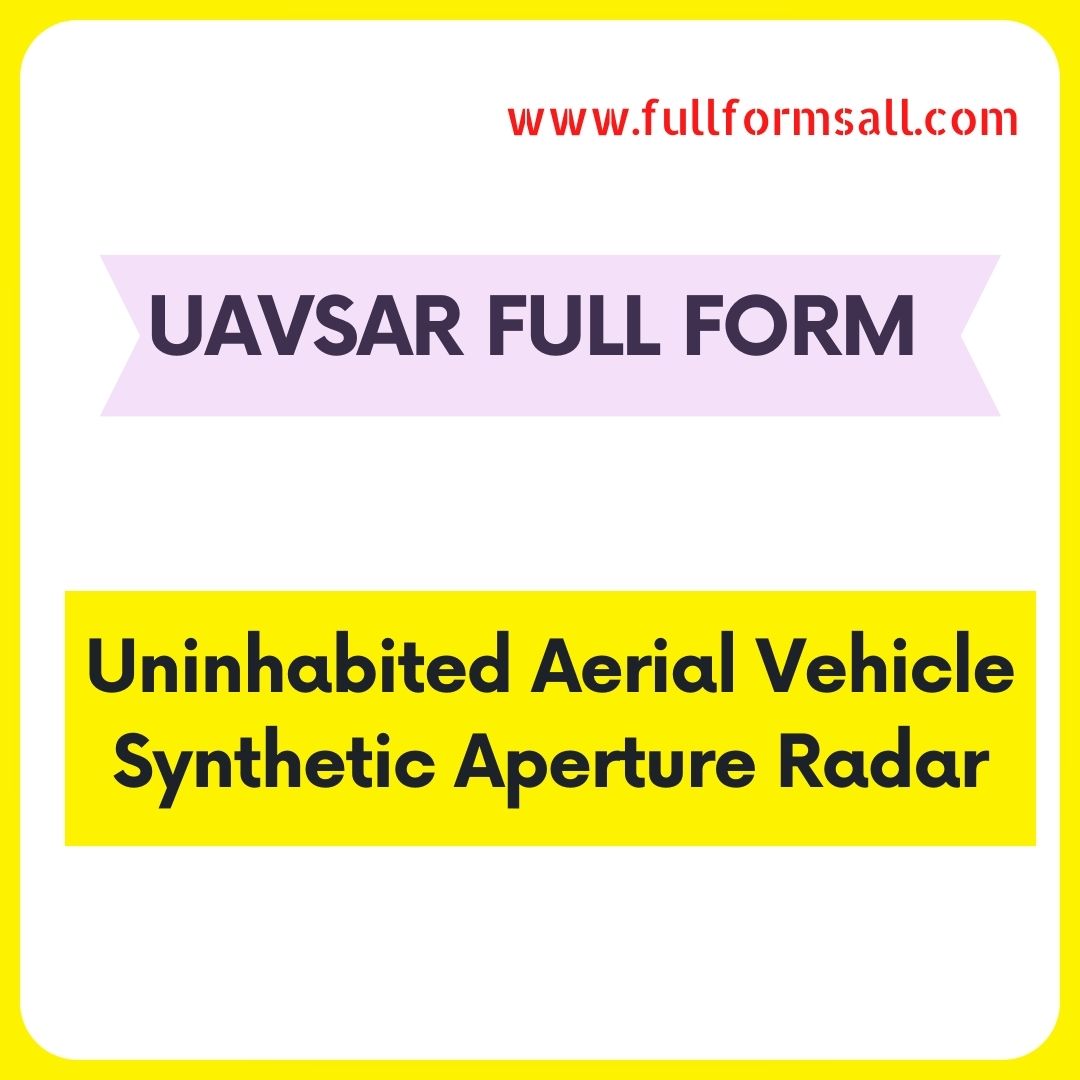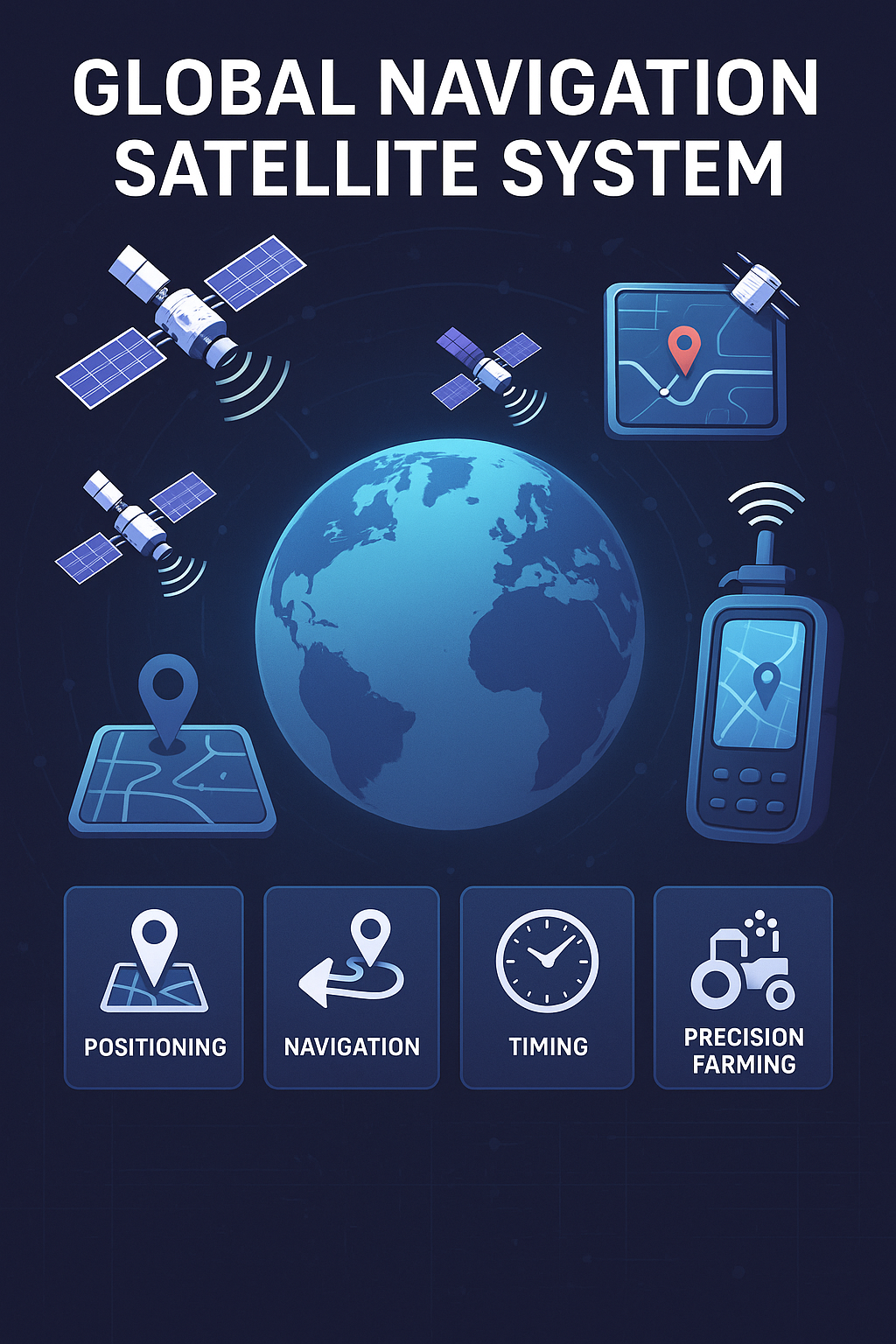In this article you get to know about UAVSAR full from and other different abbreviations of UAVSAR in various fields. UAVSAR full form refers to Uninhabited Aerial Vehicle Synthetic Aperture Radar.
Uninhabited Aerial Vehicle Synthetic Aperture Radar refers to the use of synthetic aperture radar technology on unmanned aerial vehicles or drones. Synthetic aperture radar is a remote sensing technique that uses radar to create high-resolution images or maps of the Earth’s surface.
UAV SAR systems typically consist of a radar sensor mounted on a UAV platform. The radar emits electromagnetic waves towards the ground, and the reflected signals are collected by the radar sensor. By analyzing the phase and amplitude information of the received signals, the UAV SAR system can generate detailed images of the terrain, even in the absence of natural light or adverse weather conditions.
Advantages of using UAVSAR
Remote sensing capabilities: UAV SAR systems can provide detailed and accurate information about the Earth’s surface, including topography, vegetation cover, and infrastructure, among others.
Wide-area coverage: UAV SAR systems can cover large areas quickly, making them suitable for applications such as disaster management, environmental monitoring, and surveillance.
All-weather and day-night operation: Synthetic aperture radar is not dependent on sunlight, so UAV SAR systems can operate during both day and night and in various weather conditions, including fog, rain, and clouds.
High-resolution imaging: Synthetic aperture radar technology allows for the creation of high-resolution images, enabling the detection and analysis of fine details on the Earth’s surface.

UAV SAR systems have numerous applications, including environmental monitoring, agriculture, mapping and cartography, disaster management, surveillance and reconnaissance, and infrastructure monitoring. They can be used for tasks such as assessing the extent of flood damage, monitoring crop health, mapping terrain features, detecting changes in infrastructure, and aiding search and rescue operations.
Imporatnt points about Uninhabited Aerial Vehicle Synthetic Aperture Radar
Miniaturization and lightweight design: UAV SAR systems have been developed with miniaturized and lightweight radar sensors, making them suitable for integration onto small UAV platforms. This allows for increased maneuverability, longer flight times, and the ability to access remote or challenging terrain.
Real-time data acquisition and processing: UAV SAR systems can acquire and process data in real-time, providing immediate access to information about the surveyed area. This capability is particularly valuable in time-critical applications such as emergency response or military operations.
Multi-mode and multi-polarization capabilities: UAV SAR systems can operate in different modes, such as stripmap, spotlight, or scan SAR, offering flexibility in imaging parameters and coverage. They can also utilize different polarization configurations, such as HH (horizontal-horizontal), VV (vertical-vertical), or HV (horizontal-vertical), allowing for enhanced information extraction and target characterization.
Interferometric SAR (InSAR) capabilities: InSAR is a technique that uses multiple SAR images taken from slightly different positions to create a digital elevation model or detect ground movement. UAVSAR systems equipped with InSAR capabilities can measure terrain deformation, monitor subsidence, and detect changes in land surface elevation with high precision.
Collaborative or swarm operation: Multiple UAVs equipped with SAR systems can be deployed simultaneously to achieve collaborative or swarm operation. This approach allows for increased coverage, faster data acquisition, and the ability to perform cooperative sensing tasks, such as distributed beamforming or simultaneous multi-angle imaging.
Autonomous flight and data collection: UAV SAR systems can be programmed to operate autonomously, following pre-defined flight paths or dynamically adapting their routes based on environmental conditions or mission objectives. This autonomy enables efficient data collection and reduces the need for direct human intervention.
Integration with other sensors: UAV SAR systems can be integrated with other sensors, such as optical cameras, hyperspectral imagers, or LiDAR sensors. This multi-sensor integration provides complementary data sources and enables comprehensive analysis and interpretation of the surveyed area.
Privacy and ethical considerations: As with any remote sensing technology, UAV SAR systems raise privacy and ethical concerns regarding data collection, image resolution, and potential misuse. Adhering to ethical guidelines and legal frameworks is essential to ensure responsible and respectful use of the technology.
Persistent surveillance: UAV SAR systems have the ability to loiter over a specific area for an extended period, providing persistent surveillance capabilities. This is particularly useful for monitoring borders, critical infrastructure, or sensitive areas where continuous monitoring is required.
Change detection and monitoring: UAV SAR can detect and monitor changes that occur over time in the surveyed area. By comparing SAR images acquired at different time points, it is possible to identify and analyze changes in land use, vegetation growth, infrastructure development, or natural phenomena such as landslides or shoreline erosion.
Target detection and identification: UAV SAR systems can be used for target detection and identification, including vehicles, buildings, or even specific objects of interest. The radar’s ability to penetrate certain materials and operate in adverse weather conditions makes it suitable for identifying concealed or obscured targets.
Forestry and environmental applications: UAVSAR can support forest management and environmental studies by providing information on forest structure, biomass estimation, deforestation monitoring, and wildfire detection. The penetration capability of SAR through vegetation can reveal details about the forest canopy and its underlying terrain.
Maritime surveillance: UAVSAR systems equipped with maritime modes can be employed for maritime surveillance tasks, including vessel detection, oil spill monitoring, illegal fishing detection, or search and rescue operations over coastal and open waters. SAR’s capability to penetrate through clouds and its sensitivity to surface roughness make it valuable for maritime applications.
Disaster response and recovery: In the aftermath of natural disasters, UAVSAR can play a crucial role in disaster response and recovery efforts. It can assist in damage assessment, search and rescue operations, mapping of affected areas, and monitoring the progress of recovery and reconstruction activities.
Scientific research: UAVSAR is used in various scientific research disciplines, such as geology, hydrology, glaciology, and archaeology. It helps scientists gain insights into geological features, monitor water resources, study ice dynamics, and uncover hidden archaeological structures beneath the Earth’s surface.
Urban planning and infrastructure monitoring: UAVSAR can support urban planning by providing detailed information on urban development, land use changes, and infrastructure monitoring. It aids in monitoring the condition of bridges, roads, and buildings, identifying potential structural issues or encroachments, and assisting in urban growth management.
Counter-narcotics and border surveillance: UAVSAR systems can be deployed for counter-narcotics operations and border surveillance to detect illicit activities, smuggling routes, or unauthorized border crossings. The all-weather and day-night operation capability of SAR enhances the effectiveness of these surveillance tasks.
Humanitarian applications: UAVSAR can assist in humanitarian efforts, particularly in remote or inaccessible areas. It can provide valuable information for planning and coordinating humanitarian aid, assessing the impact of humanitarian crises, and supporting decision-making processes during relief operations.
Different abbreviations of UAVSAR in various fields are as follows
| Term | Abbreviation | Category |
| UAVSAR | Unmanned Aerial Vehicle Synthetic Aperture Radar | Technology |
| UAVSAR | Uninhabited Aerial Vehicle Synthetic Aperture Radar | General |
| UAVSAR | Unmanned Air Vehicle Synthetic Aperture Radar | General |
CONCLUSION:
Dear reader in this article you get to know about UAVSAR full from and UAVSAR term used in various other fields, If you have any query regarding this article kindly comment below.
